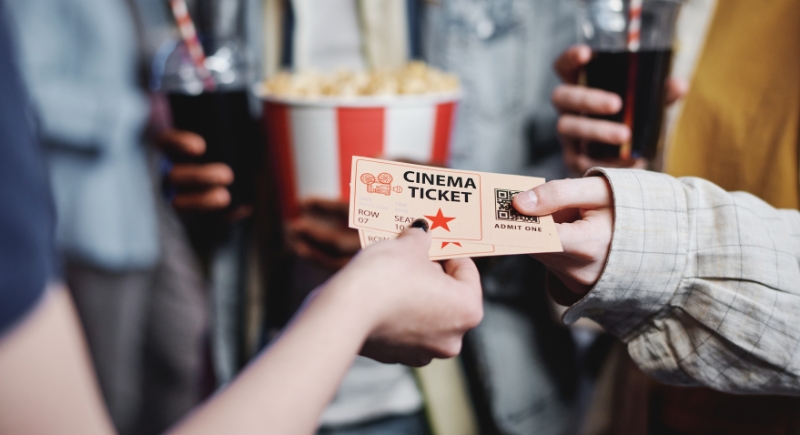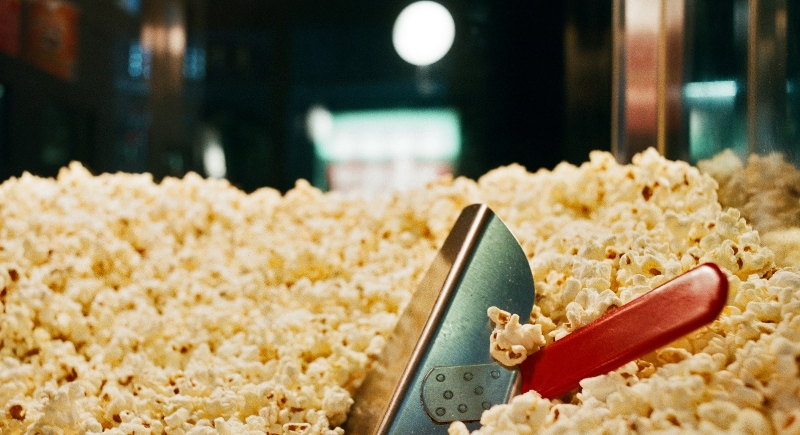The Real Reason Movie Theater Popcorn Is So Expensive
When you buy popcorn at the movies, the price always feels out of proportion to what you’re getting. A small bag costs as much as a sit-down meal. The reason isn’t as simple as theaters trying to take advantage of you. Ticket revenue mostly goes back to the studios, so concessions are what allow theaters to stay open.
Tickets Don’t Pay the Bills

Image via Canva/Pressmaster
Movie tickets may seem costly, but theaters retain very little of that revenue. Studios take around 70% of ticket sales in the first weeks after release, and on average, theaters pocket only a fraction of the ticket price. A $9 ticket might leave the theater with just $2.70, which doesn’t even begin to cover wages, rent, or utilities. Raising ticket prices wouldn’t solve much since most of the increase would flow back to distributors.
That’s why theaters treat tickets as a way to get people in the door. The real profits come from concessions. Unlike tickets, theaters keep 100% of that revenue. A medium popcorn costs theaters about $0.90 to make but sells for $7.99, a 788% markup. Sodas and candy follow similar patterns, with markups of 500% or more. Concessions account for approximately 20–30% of revenue yet generate 40–50% of profits. In one year, Cinemark earned $1.1 billion from concessions at an 84% margin, compared to razor-thin returns on tickets.
The Popcorn Strategy Works
Economists Wesley Hartmann and Ricard Gil studied revenue patterns and found that expensive concessions actually help keep ticket prices lower. This pricing approach attracts more people to theaters, particularly those who might otherwise skip movies if the tickets were higher. Theaters divide their customers into two groups: casual viewers who pay for tickets, and die-hard fans who also purchase snacks. Those loyal snack-buyers help subsidize cheaper tickets for everyone else.
Research also revealed that people who buy tickets online tend to spend more on concessions, and groups like families or teenagers purchase more snacks than solo moviegoers. This is why many theaters target family-oriented films and offer online ticketing perks to maximize sales at the snack counter.
The Science Behind The Flavor

Image via Pexels/Bruno Kraler
There’s another reason popcorn is hard to resist: it tastes better at the movies. The secret is Flavacol, a butter-flavored, ultra-fine salt that concession stands have used for decades. Its texture clings to every kernel, which creates even seasoning and the iconic yellow color that makes the popcorn look richer. Flavacol dissolves into the oil as the kernels pop and locks in flavor from the inside out while filling the air with that buttery aroma.
Most theaters pop their corn in coconut oil, which provides richness without sogginess, and use butter-flavored toppings made of oils and artificial flavorings instead of real butter. Professional popcorn machines also run hotter than home appliances, giving kernels their fluffy texture. Theaters pop in small batches and keep them warm under heat lamps, so the product stays crisp and fresh. At home, you can recreate this magic with Flavacol, coconut oil, and a stovetop popper, but part of the appeal comes from the setting itself.
These Corn Kernels Keep Theaters Alive
For theaters, concessions are a matter of survival, not luxury. Owners say the profits from snacks cover overhead costs, equipment upgrades, and staff wages. Without $6 sodas and $8 popcorn, ticket prices could easily hit $20. Even with steep markups, many small theater owners drive old vans rather than cash in on riches.
Attendance has been declining for decades, with fewer than 10% of Americans attending the movies compared to 65% in 1930. The number of theaters has dropped by more than 20% in the last two decades. For the ones that remain, popcorn is the lifeline.